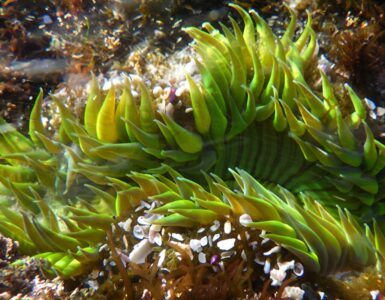by K.L. Angelo
In an exclusive first, The Starset Society is reaching out to STEM professionals across the globe and asking them questions about their career fields and the technology used. TSS is showcasing the work done by consulting geophysicist, Corey Morgan, from Houston, Texas.

Corey, would you please explain what you do as a consulting geophysicist?
I’m a geophysicist in the oil and gas industry. In a very broad sense, that means that I use and manipulate seismic data to map and characterize sedimentary layers on the Earth’s crust to find likely spots to accumulate economic quantities of hydrocarbons. I am, more specifically, a specialist in seismic imaging (making 3D pictures of the Earth’s interior with sound) and what’s known as quantitative seismic interpretation.
Can you explain quantitative seismic interpretation in more detail?
It’s attempting to derive the physical properties [of the sedimentary layers of the Earth’s crust] such as density, porosity, and permeability of those rocks from subtle differences in how they reflect sound waves. We then use that to determine if a given layer is likely to contain economic quantities of hydrocarbons.
How do you map and characterize these sedimentary layers?
At its most basic, we send a pulse of sound into the ground. If we are offshore, we use large air guns dragged behind the ship that send a tuned pulse into the ground. If we are on land, we use either dynamite packed into holes that are 50-150 feet below the surface or very large hydraulic vibrators that sweep through a group of frequencies over several seconds. The sound reflects off the layers of rock below the surface and those reflections are collected into an array of what are, essentially, microphones.
The arrays are typically about a kilometer wide and several kilometers long. In the offshore case, these are all dragged behind the boat with a pretty sophisticated set of instruments and devices to keep everything in line and positioned correctly. In many cases, a seismic vessel with a full receiver array deployed is often the largest moving object on earth. The data collected is then processed through a series of computer algorithms designed to remove noise and correctly focus the data into a final image of the subsurface layers.
From there, we map the various layers, often using well logs and other geologic information to help direct us as to what reflectors correspond to what geologic ages. I generally help with this and try to glean anything I can from the rocks physical properties at this point. However, I have, at various points in my 21 year career, worked on all stages of this process including working on seismic vessels at sea and on remote land crews.
Is the land process done in a similar manner as the oceanic process?
The basic principles are the same, but the techniques are a bit different. At sea, we use large arrays of air “guns”, basically pistons that release of bubble of compressed air into the water. On land, we use either 1-2 lbs of dynamite buried 50-100 feet below the surface or, more commonly nowadays, a large hydraulic vibrator that shakes from 3 to 60 hz over about 5 or 6 seconds. On land, we also have to contend with a lot of administrative issues like getting permission from landowners and making sure that we close all the gates and don’t trample any crops or let any livestock out.
Additionally, we have to sometimes work around creeks and roads and other natural features when we lay out the receiver arrays. Finally, you have a lot of noise onshore that you don’t have at sea. For instance a busy highway creates a lot of additional noise, or if you happen to have a line of receivers near power lines, they will actually pick up the 60 hz frequency that AC power is transmitted at here. It creates a variety of problems, but those are usually kind of fun to solve.
Do you (basically) find fossil fuels for oil and gas companies? Or is your research more in depth than that?
Yes, the main “thing” I do is help find fossil fuels (hydrocarbons) for oil and gas companies. My part mostly helps determine the best drilling locations. Occasionally, our work results in purely academic knowledge in geology or geophysics, such as helping to characterize the Chicxulub crater (the impact crater from the asteroid that killed the dinosaurs) which is easily seen on seismic data. Occasionally, we do something totally off the reservation like develop auto tune.
Develop Auto tune?
Yes, auto tune, that was kind of a fad in the music recording industry a few years ago, and was invented by a geophysicist. It was invented by a gentleman named Dr. Andy Hildebrand. Andy was a geophysicist who founded (along with a former coworker of mine) Landmark Graphics Corporation. They developed the first seismic interpretation software before they sold the company to Haliburton many years back. Autotune is essentially a process called autocorrelation that’s used to find regularity, or repeating frequencies, in a signal. It’s a good way to find what musicians refer to as “pitch”. Autotune can correct the pitch to whatever frequency range you want by digitally shifting its autocorrelation output. We use autocorrelation for many different processes in seismic data processing, just not usually correcting our horrible singing voices.
My industry has also been instrumental in developing technologies such as tomography, i.e. the CAT scan, and seismic data processing and imaging has been the traditional “stress test” for super computer manufacturers. My personal work has generally been pretty much all oil and gas applied type stuff. However, I definitely use the skills I’ve learned as a scientist over the years in my “hobby” work doing amateur astronomy, programming, etc.
Can you go into more detail about tomography and the imaging process?
Tomography is a computational process that breaks a volume of “stuff” (rocks in my case, tissue if you are doing a CAT scan) into small cells and through the magic of linear algebra, comes to a consistent solution for some physical property. In CAT scans, I think they are usually looking at variation in density and travel time that can then be used to reassemble an image of the body cavity of interest. In my case, we are looking at reflected sound, so we are trying to solve for acoustic velocity of the rock layers. This allows us to mathematically reconstruct the path that the sound pulse took from the source down to the rocks and back up to the receivers.
What software do you use?
Software wise, we use a variety of packages. Most of the processing and imaging software is home written by the various companies that specialize in seismic processing. There are some freeware/open source options, the most popular of which is a program called Seismic Unix published by the Colorado School of Mines. For mapping, there are many options as well, however, in my consulting work, I usually use one called Open DTect because it’s low cost and does most of what I need. The QI work is a little more specialized so I use some home written stuff as well as package called Hampson-Russell at times.
What other projects are you working on?
Outside of the geosciences, I’m working towards my FAA drone pilot certification with hopes of doing some aerial photography and remote sensing work in the future.
How do drones and aerial photography help with seismic activity?
They’re getting a lot of recent use in helping survey potential locations to where to place the shots and receivers. Often, you are shooting well off the “beaten path” so it’s useful to get an idea of what kind of terrain, vegetation, etc. are out there. The oil industry in general also uses them to survey pipelines, take a look at items that are high up (such as the top of a drilling rig), etc. With proper sensors, they can also look for potential leaks, hot spots, and other dangers to worker or environmental safety.
What do you foresee in the technological future for geoscience?
I think the future is reasonably bright from a career perspective. Geoscientists will always be needed for large infrastructure projects, mining, environmental cleanup and assessment and many other lines of work. The specialites that I’m personally in seem to be a bit oil-centric, but we can use these same techniques for characterizing subsurface water or other potentially valuable minerals.
You mentioned you did work for oil and gas companies. What kind of environmental impacts does your work have?
My immediate work has a positive environmental impact, since the work we do in seismic imaging and interpretation reduces the number of wells we drill. While oil exploration is often viewed as a net negative for the environment, we are trying to do what we can to minimize its impact on our planet. Fossil fuels are going to be a major part of the world’s energy mix for a long time to come.
Even as we switch to “greener” technology for transportation, power generation, etc, we will still be using hydrocarbons, mostly in the form of natural gas, which burns much cleaner than oil and is something we have in abundance. One of the advantages of seismic imaging, particularly using the quantitative interpretation techniques that I do, is that we can sort of “see” natural gas deposits due to the effects they have on the acoustic properties of the rocks they reside in.
For argument’s sake, if hydrocarbons are depleted in the next ten years, how will that affect the work you do? Can you use your skills and knowledge in developing “greener” resources?
If we run out of hydrocarbons in the next 10 years, we have much bigger problems to worry about. In all seriousness, yes, what I do can and often is used in finding “green” energy. As I said earlier, natural gas is relatively green, and seismic data almost directly “sees” natural gas deposits. With the recent downturn in oil and gas, I and several friends of mine, have turned our skills towards doing what’s called shallow hazards assessment. That takes small, high resolution seismic surveys to look specifically for buried hazards to construction and drilling projects. Several of the projects we have worked on have been for companies that are building large, offshore wind farms and need to know that the areas of the seabed they are looking to build their turbines are stable and safe.
I also think there will be a growing market for finding water or suitable sedimentary strata for storing water in the coming years. Seismic technology can definitely be applied to that. The technologies that we in the geophysical industry utilize, such as signal processing, acoustic sensing, geodyssey, and digital imaging, have applications in many industries. So, even if the oil dried up tomorrow, I think I’d still be able to make a living based on the skills and experience I’ve gained.
If someone wanted to become a geophysicist like yourself, what kind of schooling would they need?
That actually has a pretty wide variation. Obviously a degree in science, math, or engineering is a good start. The data processing side tends to like people with math and physics degrees while the side that does more of the geologic interpretation tends to lean more towards geology and geophysics degrees. The most important skill is to be a good problem solver. Every project is different and every dataset has a unique set of problems and challenges that have to be solved. I have a BS and MS degrees in physics but I didn’t do any sort of geology and geophysics work while I was in school. I did, however, learn to solve problems and be methodical and meticulous about it. I know people with degrees in geology, geophysics, physics, math, electrical engineering, chemistry, and several other fields. I would definitely suggest getting at least an MS degree. It opens doors that just having a bachelors doesn’t.
Thank you, Corey, for our first exclusive STEM Q&A. If anyone has additional questions, may they reach out to you?
Feel free to contact me on LinkedIn










Add comment